A hair type chart is a tool used by Hairdressers to determine what type of hair you have. There are different categories for different types of Hair, such as curly hair, coarse Hair, or oily hair. Hair type charts can also help you choose the best Hairstyle for your hair type. Here are some examples.

Curly Hair
Knowing your curl type is important when you’re planning on styling your hair. There are many different types of curls, and knowing which type you have can help you decide which type of styling will work best for your hair. Curly hair is a little trickier to figure out because it can be more than one texture at once. For example, if you have curly Hair at the crown, it may be much different from the strands that grow in the sides and back. It can be quite confusing.
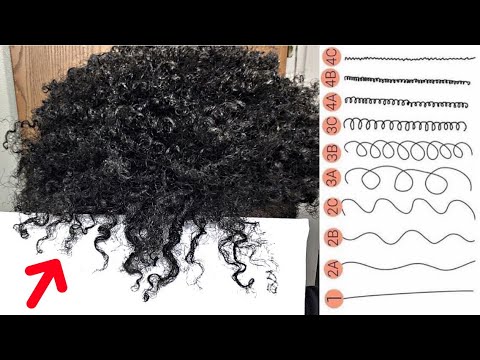


In order to get the right products for your curl type, you need to determine its porosity level. Some curls are naturally dry, while others are naturally oily. These differences can result in several different curly hair types, which range from Coily to Kinky. Everybody’s hair type is different, so it’s important to learn about your hair type to make sure you use products that will be the right ones for your specific type. You should also apply products when your hair is still wet so they can lock in moisture and keep curls looking healthy.



Curl types are determined by three factors. These three factors affect the thickness of your hair, as well as the density of each strand. The thickness of your hair determines the strength and the flexibility of each curl. Hair that is thicker can hold the curls more tightly, while hair that is thinner is more flexible and prone to frizz.



Using a curl type chart can help you find the right type of styling. You’ll also be more confident about the color and style that works best for your unique hair type. A popular classification for men’s hair is based on its texture. Basically, type 1 is a straight hair type 2 is wavy. Type 3 has swirly curls while type 4 is almost curly.



A type 3 hair type is very voluminous and springy. It is also called a “S” curl. Although the type 3a curl is the most common, it’s not the only one. Type 3b hair is a mixture of two different patterns. Some people’s hair even looks like a combination of two or three of these types.



Waves
Identifying your hair type is important for maintaining healthy hair. Knowing your hair type can make your hair care routine easier and more effective. The hair type chart is a helpful resource for this. It identifies the types of hair strands and what products work best for each one. It is important to follow the proper care regimen and avoid using harsh chemicals.


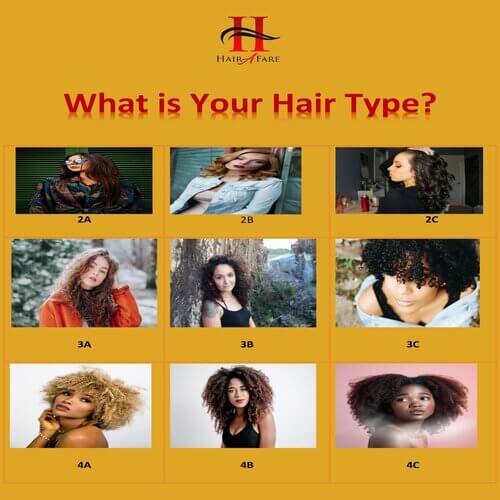
A great conditioner is essential for wavy hair. A great conditioner will give your tresses extra body and help eliminate frizz. Light hold styling aids are ideal for wavy hair. A heavy styling cream may flatten your tresses. Try Matrix Biolage Styling Whipped Volume Mousse.


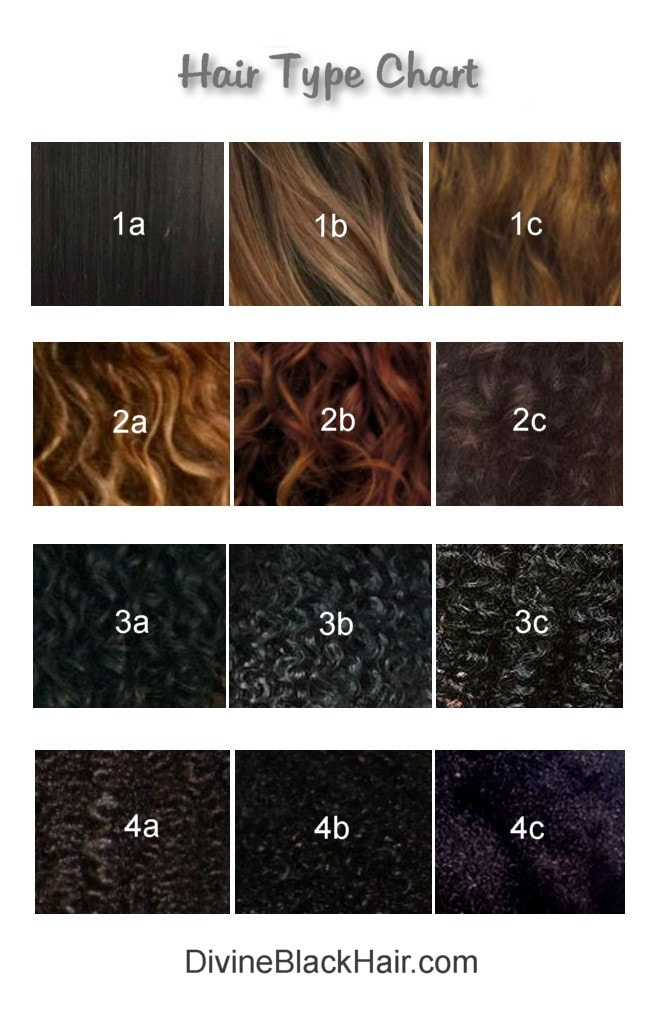
If you have type 2B hair, your tresses will have a medium to large wavy pattern. Using gentle shampoos and conditioners will help to preserve the waves and keep them defined. You should also consider using a light leave-in conditioner to provide extra protection. Another product you should try is Orlando Pita Well Behaved Anti-Frizz Cream Serum.



Type 2A hair has waves near the scalp but lacks definition and volume. It is best to avoid oil-based hair products. This type also tends to be more frizzy than other types. If your hair is dry, you should use a sulfate-free shampoo to help maintain the natural oils in your hair.


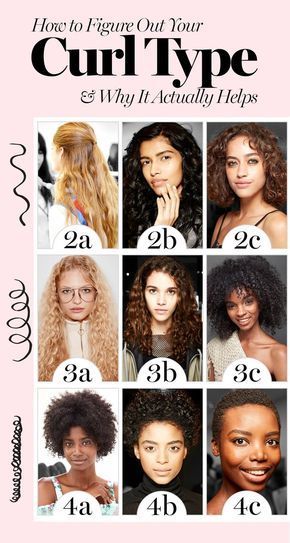
The Waves hair type chart is a helpful tool to learn about your hair type. Identifying your hair type will help you adapt your hair care and styling routines. It will help you decide what products are best for your hair. The wavy hair types can vary in size, frizz tendency, and thickness, but each type benefits from the proper products and styling techniques.

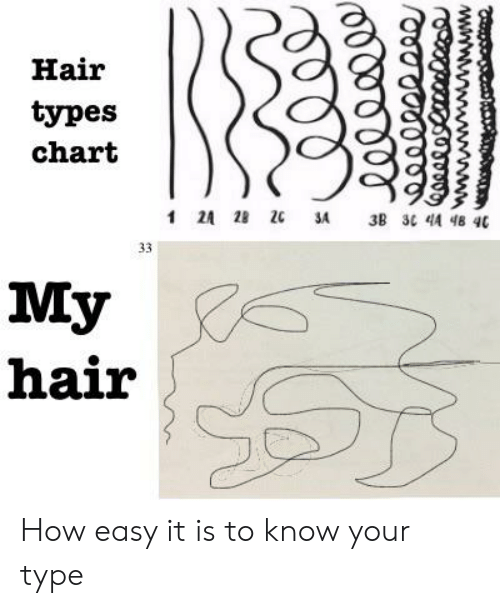
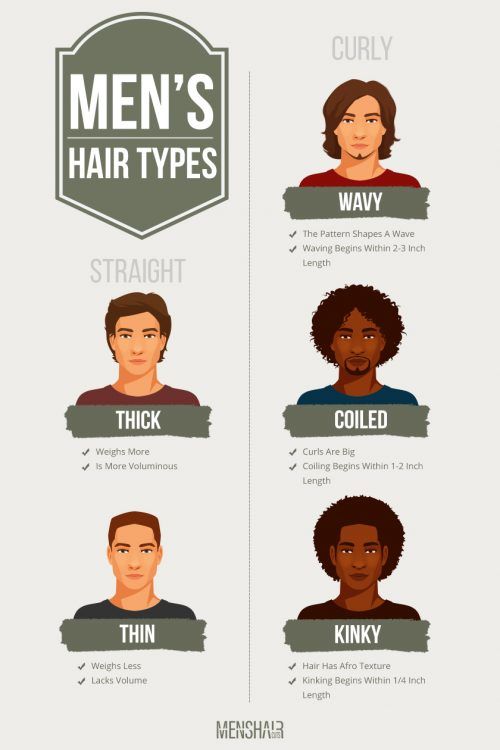



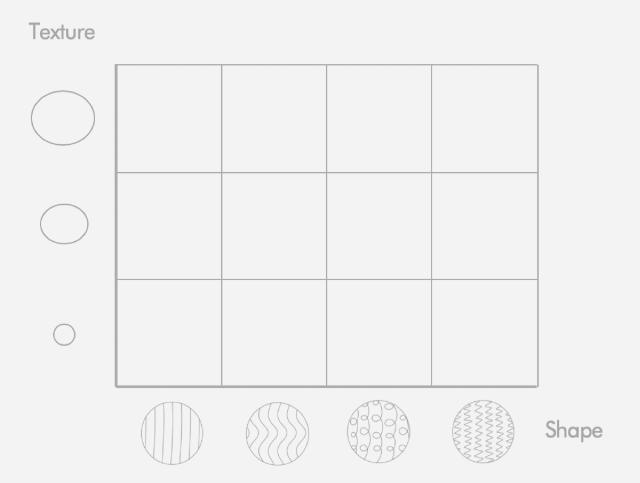



Spiral curls
Spiral curls are hair that grows in a spiral pattern. They have a fine, springy texture and are often quite unique. Spiral curls should be given special attention when styling and choosing products. These curls should be treated gently and regularly moisturized with lightweight products.
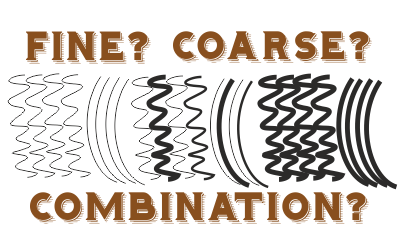
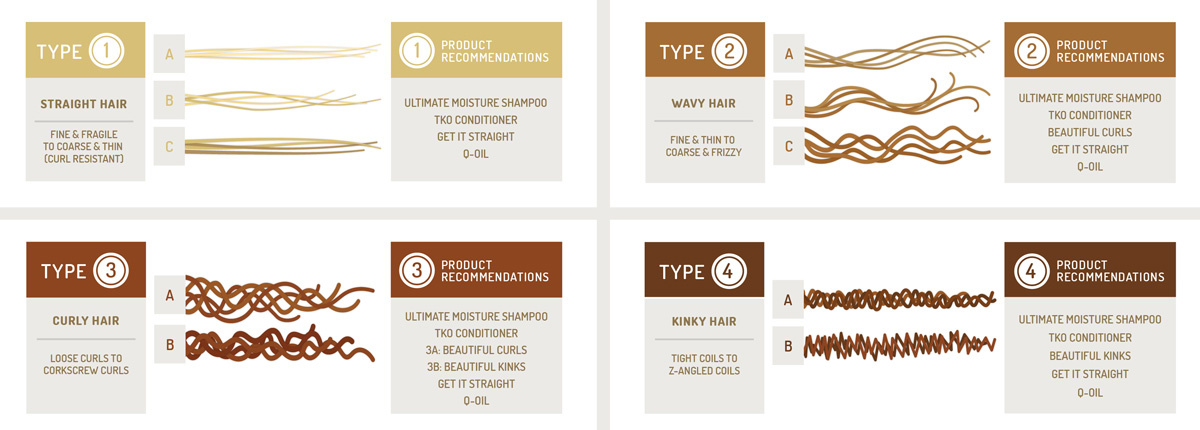

The first step in styling is to understand your curl type. There are four types of spiral curls. Type 4A curls are the tightest, with tiny coils at the root. Type 4B hair has zigzag curls and can tolerate a wide range of styling products. Using a gentle shampoo and conditioner is the key to maintaining healthy spiral curls. Alaffia’s EveryDay Coconut shampoo and conditioner is ideal for type 4B hair, as they’re made with virgin coconut oil and no artificial colors.



Type 3A curls are known to be the easiest to maintain. Oftentimes, they don’t require a lot of styling. But you should always keep in mind that excessive shampooing can dry your curls. A good rule of thumb is to use shampoo only once every five to seven days. You should also use leave-ins and masks to maintain your curls’ moisture. A good moisturizing styling cream like Joico Moisture Recovery Treatment Balm is a must.



If you have waves on the crown, try using a light mousse. Avoid heavy creams, as they can flatten curls. If you are unsure of what to use, you can test Joico Moisture Co-Wash Whipped Cleansing Conditioner. You can also use a hair gel to keep your curls in place. If you don’t want to use a mousse, try Dove Amplified Textures Shine and Moisture Finishing Gel. It’s infused with softening oils.



The Spiral curls hair type chart helps you identify your hair type. Each type has different characteristics. For example, Type 3a has large, loose curls, and Type 3B has more defined curls. Type 3C hair tends to be drier, so it’s important to use moisturizing products to keep it healthy.
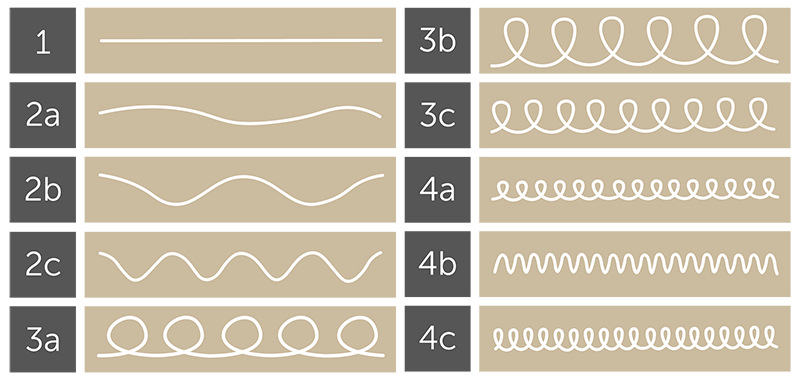
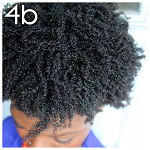
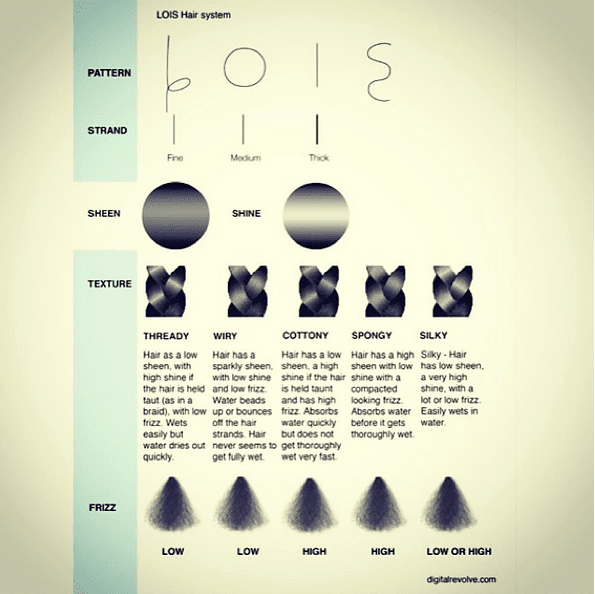
If your hair is fine or medium, it might be hard to figure out what type it is. You can try looking in the mirror, listening to your curls, or even listening to your hair type to know what products will work best.


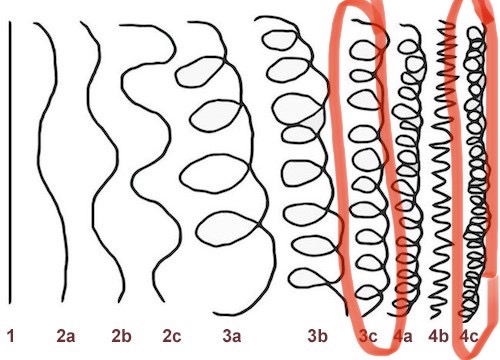
Oily hair
To determine whether you have oily hair or not, start by looking at your hair texture. Straight hair is usually the most oily type. It is also the most resilient and difficult to curl. Wavy hair has a texture in between straight and curly hair, and is also one of the least oily. While type A waves are easily curled and can easily be manipulated, type B and C waves are the least prone to styling.



The following chart will give you an idea of which type you have. If you are not sure about your hair type, simply compare a thread or piece of hair with the hair types listed below. This way, you can determine which shampoo and conditioner you should be using. You can also look at your hair thickness.



Oily hair is also prone to flaky scalp and hair. A good way to avoid this is to use products that control excess oil. These products also aim to soothe the scalp, which will help limit the amount of oil that your hair can produce. While they won’t prevent you from washing your hair regularly, they will help keep it fresh and hydrated in between washes.
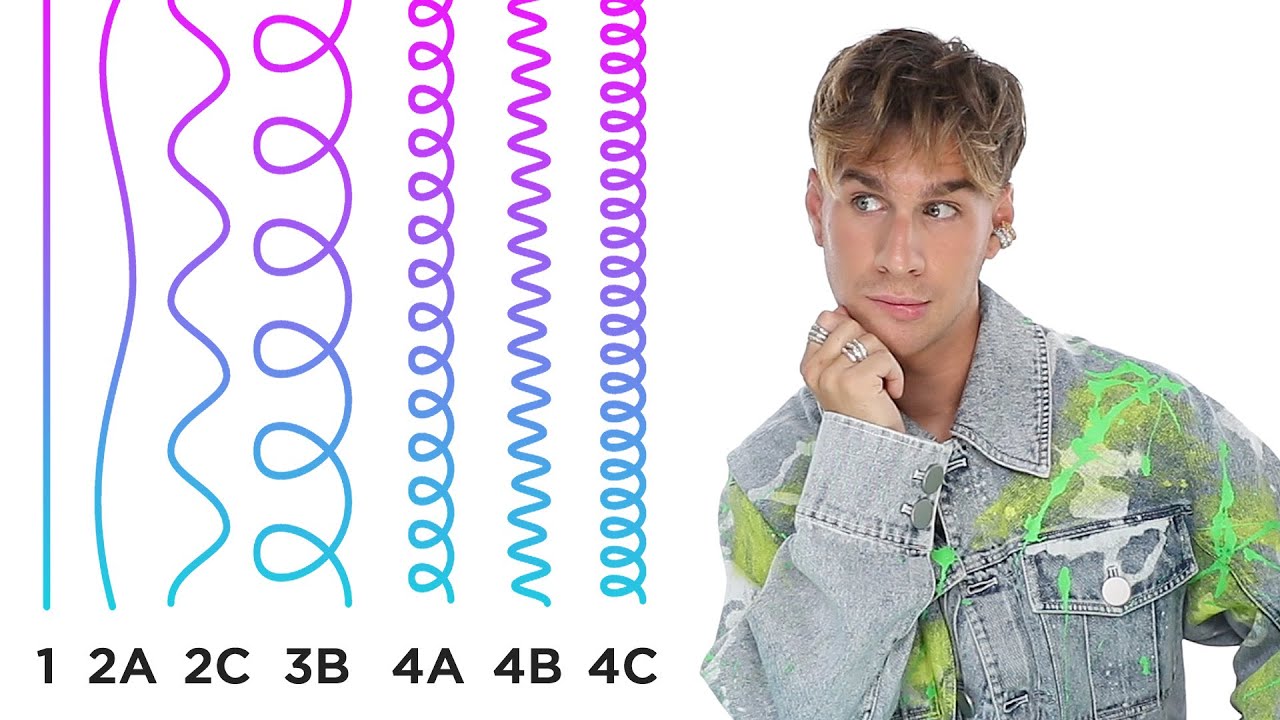


Gentle shampoos use mild surfactants as their main detergent. They are usually the first or second ingredient after water. They are excellent for dry hair, but aren’t the best choice for oily scalps. Instead, look for a shampoo with a stronger anionic surfactant. You can even try using a sulfate-free shampoo instead.

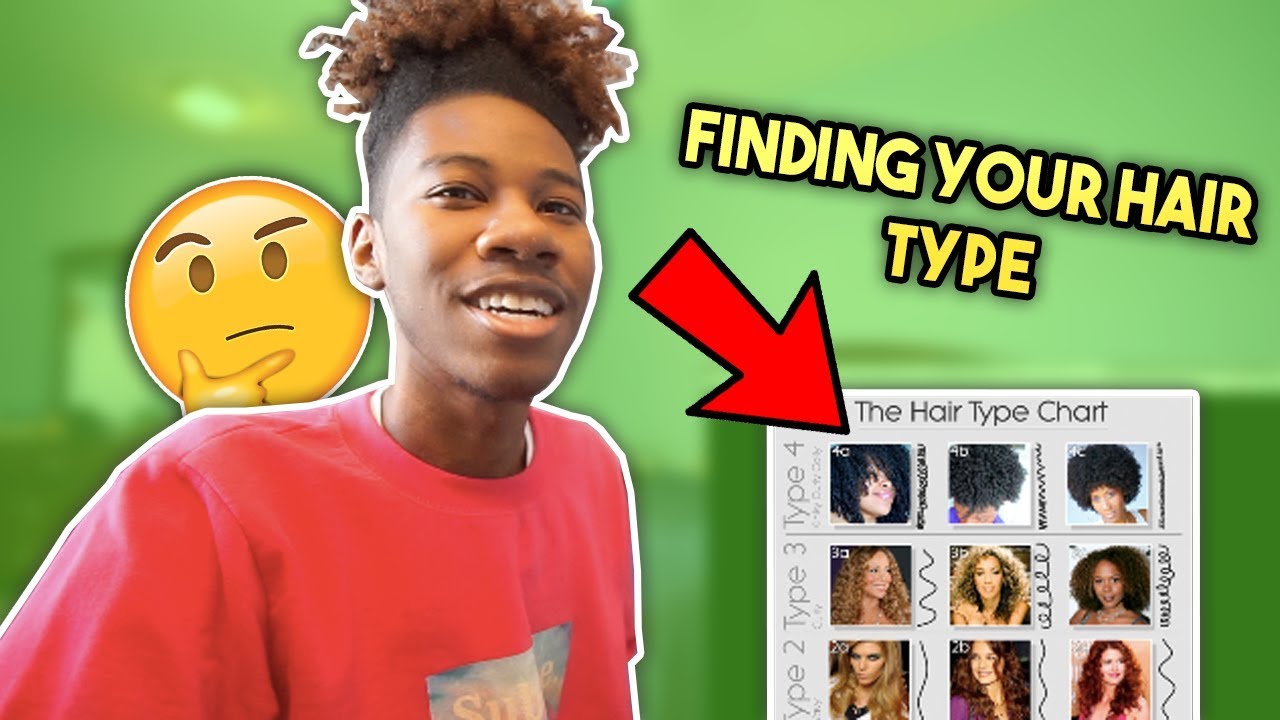








A Hair Type Chart Can Help You Identify Your Hair Type
Understanding your hair type can help you correct any hair problems you may have. Many different hair types overlap, so it can be difficult to tell the difference. A simple hair type chart can help you identify your hair type more easily. You can also determine the texture of your hair, which will help you narrow down your choices.









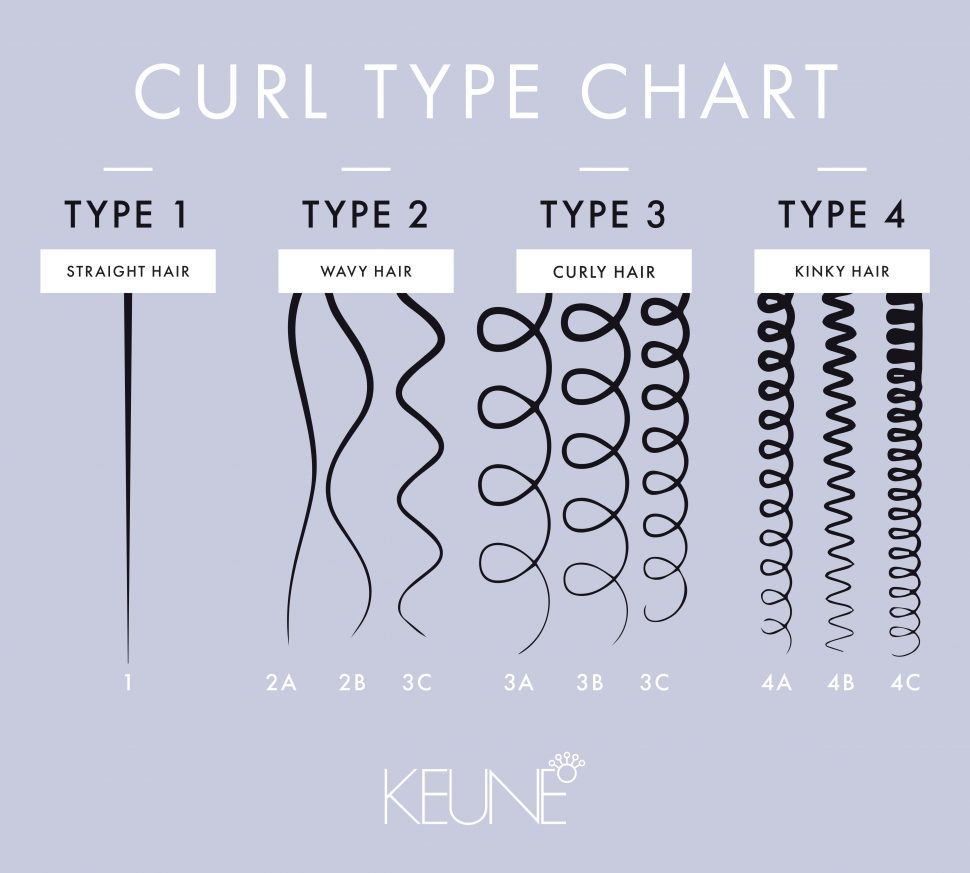
Curl type 1 means absence of curl
If your hair lacks curls, you may be a person with Type 1 hair. While this type of hair is resilient, it cannot hold curls for long. If you are a person with Type 1 hair, you should apply a leave-in conditioner to keep your strands moisturized. Also, you should avoid sleeping with your hair wet. Lastly, you should use a satin pillowcase to protect your curls from dryness.



There are many factors that determine the type of curl in your hair. The shape of your follicle will affect the curl pattern. The flatter or more oval the follicle, the more curls your hair will have. Curls form around the follicle in a spiral or cluster pattern, and they can be tight or loose.
Another way to classify curls is to use the Andre Walker classification system. This system classifies curls into four different families, each with a different level of tightness. Type 1 means no curls, while Type 2 means waves, Type 3 means spiraled curls, and Type 4 is free curls and coils.
Type 4a and Type 4b hair have coils and kinks. The latter are reminiscent of tiny corkscrews, and the former are tight and wiry. The latter type is more prone to shrinkage and lacks curl definition. It is important to treat these types of hair before washing to keep them healthy.
Type 4 hair is the curliest type. The curls are tightly coiled and can look coarse. It also tends to be dry and has a higher density. It is also more fragile, and needs constant protection. It is common in black hair.
Curl type 2 means waves
Type 2B hair has a wavy texture but lacks definition and volume. Lightweight styling products are best for this type because they can enhance the waves while also adding volume. Type 2C hair is characterized by tight “S” shaped curls. Some strands may even form a loose corkscrew when styled. This type of hair is prone to frizz, so it is important to use anti-frizz products to keep it from drying out.
If you want your waves to be bouncy, your best bet is to use a clarifying shampoo. You should follow up with a deep hydrating hair treatment. This is because moisture overload can leave locks limp and brittle. Then, apply a protein-rich serum to restore the natural shine and texture of your hair.
Type 2 hair has several subtypes, although all are considered “wavy”. Each one requires its own style and specific hair care routine. Jessicurl has products designed for all of them. For example, 2a hair is fine and can be straightened easily, while 2b hair has a medium texture. This type of hair is not as resistant to styling, but does tend to frizz.
Type 3 hair is curly. The curl pattern may vary from buoyant loops to tight corkscrews. It can be bouncy or loose and may be soft to the touch. If it is curly, it should be treated with special hair products to minimize frizz. These products should be formulated specifically for this type of hair.
Type 4B hair is more like zigzag than curl. The strands are porous and need moisture and deep conditioning to keep them healthy and shiny. The LOC method works well for this type of hair. This treatment hydrates the hair and gives it more elasticity to be styled. If you want to use a styling product, try Mielle Organics Pomegranate & Honey Curl Sculpting Custard, or Joico Moisture Recovery Treatment Balm.
Curl type 3 is spiraled curls
Curl type 3 is defined by spiraled curls and can have the appearance of a pencil. This hair type is usually medium to long, and has an overall curly texture. The spirals can be small and loose or large and can resemble corkscrews. This hair type responds well to a variety of styling techniques, including wash and go’s and curling products. Plopping, or teasing, helps to create defined curls.
Curl type 3 hair is springy and has clearly defined spiral curls when it is wet. The spirals can be as large as a jumbo marker or as small as a pencil. The most common type of type 3 curls is Type 3A, but there are other smaller curl types, such as Type 3B. Curls of this type respond well to curl-defining products and are easier to style than those of other types of curls.
Curl type 4 is the most fragile of the three types. These curls are susceptible to snapping and shredding, so you should avoid using hot tools or other styling products that may cause breakage. If you want to use heat tools, you should use a heat-protective serum or a heat-resistant cream. Naturally wavy hair is a great choice for this type of curl.
Curl type 3 hair can be prone to frizz, so using a product that helps your hair retain its moisture is a good idea. However, frequent shampooing can dry your curls out. To avoid this, use a satin pillowcase and bonnet at night. It is also helpful to use high-quality hair products. For example, you can use Daily Dose Miracle Moisturizing Leave-In Conditioner, which is a lightweight formula.
Curl type 4 is kinks
Type 4 hair is very delicate and requires low manipulation. This type of curls has coils that need to be manipulated gently to prevent breakage. Because of this, owners should take their time when washing, conditioning, and detangling their locks. Also, layering products is essential to keeping the coils healthy.
The best way to manage this type of curl is to apply a light mousse or texture spray. Applying a thick cream or mousse will also give your hair a little lift. After that, use a blowout or a hot tool to straighten your curls. This will add some much-needed volume to your hairstyle.
Curls of Type 4 are often characterized by kinks and coils. They are a little more difficult to manage than those of Type 3 and 4. Because they are more difficult to maintain, a professional stylist will help you get the most out of your curls.
Type 4c hair is medium to coarse in texture and requires the most moisture. The best conditioner for this type of hair is one that contains a lot of butter. Kinky hair is also prone to tangling and will need a trim. If the ends are tangling easily, you should make an appointment with a hair stylist.
Products for each hair type
For healthy hair, it’s essential to choose the right hair products. You want products that contain no harmful chemicals, silicones, or mineral oils. Each hair type has different needs when it comes to styling and care. First, you need to know your hair follicle type. If your follicle is semi-oval, your hair will be wavy, and if it’s flat or oval, your hair will be coily.

